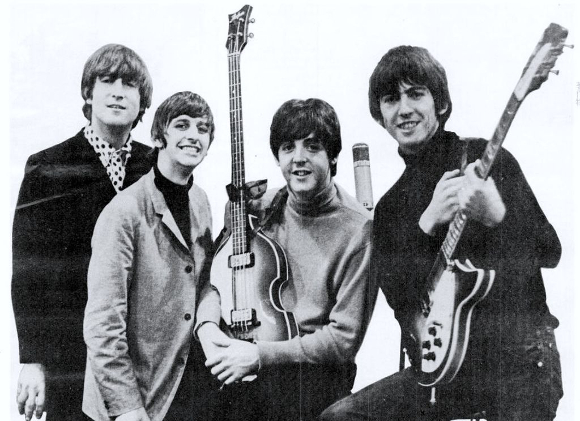Articles
- The 20th century
- Key events
- Making sense of the tangible world
- Health and Welfare
- Space exploration
- Scientific advancement: computers, technology & textiles
- Monarchy
- Democracy & social mobility
- Transport and leisure
- Colonialism & post-colonialism
- Sexuality, marriage, parenthood & divorce
- Income & consumerism
- Humans and the environment
- Educational context
- Mass culture & entertainment
- The world of work
- Making sense of the intangible world
Mass culture & entertainment
Radio
The British Broadcasting Corporation (BBC) began transmitting radio broadcasts in the 1920s. It was a non-commercial public service, but it maintained its independence from government control. Its output was intended to be educational and morally beneficial. Even its entertainment programmes sought to be uplifting in tone.
The only commercial radio broadcasts came from stations such as Radio Luxembourg and Radio Normandie, based in other European countries. Their programmes were more lightweight in tone than those from the BBC. However, during the Second World War all these commercial stations closed down.
In the 1930s and 1940s, before TV became widely available, radio performers were the biggest stars in the country. Listening to radio programmes unified the population, particularly during WWII when hours at home under blackout conditions could otherwise be tedious and isolating.
For two decades after the Second World War, the BBC was the only radio broadcaster in the United Kingdom, apart from Radio Luxembourg. Then, in the 1960s, a number of pirate radio stations began broadcasting from ships moored just outside British waters. Their output consisted entirely of pop music and they were very popular with young people. This popularity prompted the BBC to launch its own pop music station, Radio One, in 1967, employing a number of the ‘pirate’ disc jockeys. These changes coincided with the growing availability of cheap portable transistor radios, which were particularly popular with young people.
Land-based British commercial radio began in 1973. The first stations served local regions but, subsequently, national commercial radio stations were launched. The range of programmes and voices heard over the airwaves broadened considerably.
Popular music
The introduction of radio broadcasting in the 1920s coincided with the development of more affordable sound recording technology. Dance bands and their singers were among the most popular radio stars, and thousands of people bought their recordings. The introduction of sound to films in the late 1920s provided another outlet for popular music, as musicals were among the most successful early talking pictures. Many of the films were American, and American music stars became popular in the United Kingdom.
 Trends in music swept the nation much more swiftly and, until the emergence of the Beatles in the early 60s, American styles were dominant. The nation listened and danced to American jazz in the 20s, big bands in the 30s, swing and jive in the 40s and rock ’n’ roll in the 50s.
Trends in music swept the nation much more swiftly and, until the emergence of the Beatles in the early 60s, American styles were dominant. The nation listened and danced to American jazz in the 20s, big bands in the 30s, swing and jive in the 40s and rock ’n’ roll in the 50s.Through to the 1950s, the target audience for most popular music was adults. With the emergence of rock ’n’ roll, the music industry found a new audience in teenagers, who had unprecedented amounts of money to spend on entertainment. Although ‘pop music’ was scorned and even feared by many members of the older generation, sales of recorded music rocketed, fuelled by the eventual emergence of radio stations specialising in pop music.
Newspapers
At the beginning of the twentieth century, most British newspapers (such as The Times) were intended as serious publications for educated readers. But the early years of the century saw the launch of a number of more popular newspapers, such as the Daily Mirror, aimed at readers from a more modest background. Throughout the first half of the century, they were the main source of news for most people and they were phenomenally popular. Each newspaper had a distinct political viewpoint, which helped to sway the voting behaviour of its readers.
As the news output of radio and television developed from the 1950s onwards, newspapers began to lose readers and some went out of business. At the end of the century they were further affected by the spread of the internet, and adapted by providing online versions of the printed newspapers.
Censorship
British newspapers have always fiercely defended their independence and resisted attempts to censor them. However, during the two world wars, their contents were subject to government control. Their role was to keep people's morale high, so they were restricted in the way they reported setbacks to the war effort. In peacetime, their investigations regularly upset prominent people and organisations but, throughout the twentieth century, they were allowed to regulate themselves.
Sport
Organised national sport, such as the Football League, first developed in the nineteenth century, and matches between regional teams were facilitated by the development of the railway network. It blossomed further in the twentieth century with the development of road transport, when the site of cars displaying team colours as fans drove to Saturday matches became a regular occurrence.
International sporting events also became possible. The modern Olympic movement was established in 1896, and London hosted the Olympic Games in 1908 and 1948 (and, most recently, in 2012). Fixtures such as the Wimbledon tennis championships became increasingly international in character and overseas teams visited the UK to play sports such as cricket.
From the 1950s, the spread of air transport allowed the emergence of more widely international sporting competitions, such as the European and World Cups in soccer.
The broadcasting of sporting events on radio and then on TV added further to their popularity.
Cinema
 The start of the twentieth century coincided with the invention of moving pictures. Film very quickly became a cheap and popular form of entertainment, and most communities had at least one cinema. Film actors became worldwide stars. Many of the films seen in the United Kingdom came from America, and American culture became increasingly influential. Cinema audiences sought to copy the vocabulary and fashions of the stars they idolised.
The start of the twentieth century coincided with the invention of moving pictures. Film very quickly became a cheap and popular form of entertainment, and most communities had at least one cinema. Film actors became worldwide stars. Many of the films seen in the United Kingdom came from America, and American culture became increasingly influential. Cinema audiences sought to copy the vocabulary and fashions of the stars they idolised.The influence of the cinema began to weaken in the 1960s as television broadcasts became more varied and more people owned a TV set. However, the advent of video technology and the use of computer technology to create startling special effects revived cinema’s fortunes in the last quarter of the century. ‘Blockbusters’ (so called because people queued around the block to gain entry when they launched) influenced other leisure areas, spawning comics, toys and video/computer games. Although many small local cinemas closed down, large multiplex cinemas became increasingly popular, helped by increased car ownership
Television
The BBC began national television broadcasts after the Second World War and sales of TV sets grew steadily. The process was stimulated by the opening of the first commercial TV channel in 1955. Very quickly, TV began to exert a major cultural influence. Popular programmes could attract audiences of many millions and they became an important focus of people's conversations. Advertisements on the commercial channel helped to shape the way people spent their money.
Up to the 1980s, there were still only four TV channels. But that decade saw the development of satellite and cable technology. Quite rapidly, the number of channels available was numbered in the hundreds. By the end of the century, TV was more influential than ever, but its audience was heavily fragmented.
Gaming
In the first half of the twentieth century, the only gambling allowed in the United Kingdom was at race tracks. But in 1961 the government legalised betting shops. They soon spread to all towns and cities. At much the same time, bingo halls became popular, particularly among women. They had lost some of their popularity by the end of the century, but gambling overall blossomed with the development of the Internet.
With the advent of video and computer technology, involvement in video and computer games became increasingly popular towards the end of the century, initially with teenagers but gradually spreading to other sectors of society. Developments in the internet meant that players could interact with others online and the increasing ‘reality’ of the gaming experience led to concern at the influence that these ‘alternative worlds’ had on the social behaviour of those involved.
Recreational drugs
At the start of the twentieth century, the two most common recreational drugs were alcohol and tobacco. Alcohol consumption grew throughout the century but tobacco consumption declined in the last quarter of the twentieth century, once it was discovered that it caused serious illnesses, such as lung cancer. Other, illegal, drugs were available on a limited basis, but their use was frowned upon and was not widespread.
The 1960s saw a significant growth in the use of recreational drugs. The counter-culture associated with the hippie movement openly advocated the use of illegal mind-altering substances. Many people were swayed by the knowledge that cultural idols such as the Beatles were recreational drug users.
Successive governments sought to wage a war on illegal drugs, but it proved to be a losing battle. Drugs became ever more readily available and prices fell, causing concern that that even young teenagers could afford them. By the end of the century, the law remained largely unchanged, but there was growing pressure from influential voices to liberalise the drugs laws.
The global war which lasted from 1939 – 1945
A famous English pop band, formed in Liverpool in 1960, comprising John Lennon, Paul McCartney, George Harrison and Ringo Star.
A game played with a numbered card.
1960s counter-cultural movement
Recently Viewed
Scan and go

Scan on your mobile for direct link.